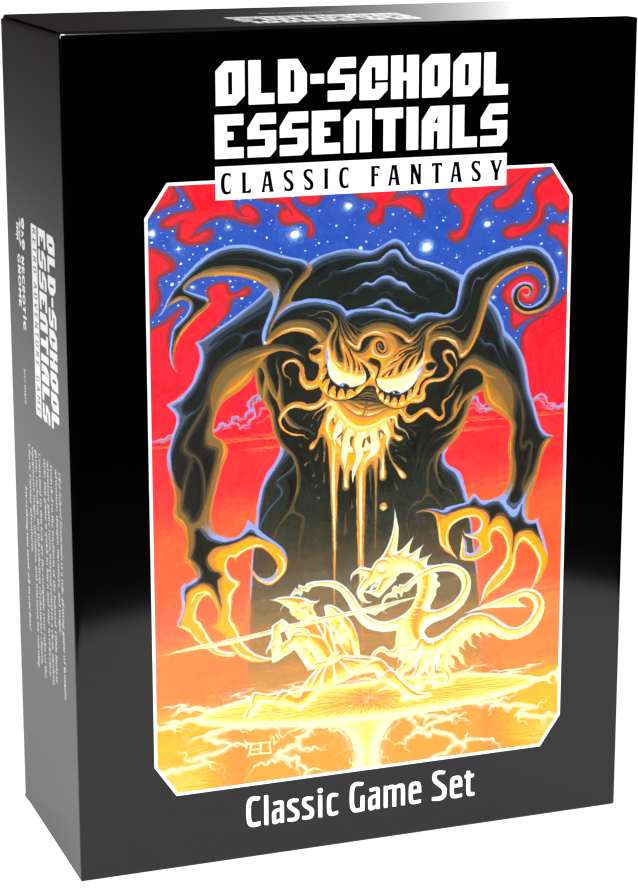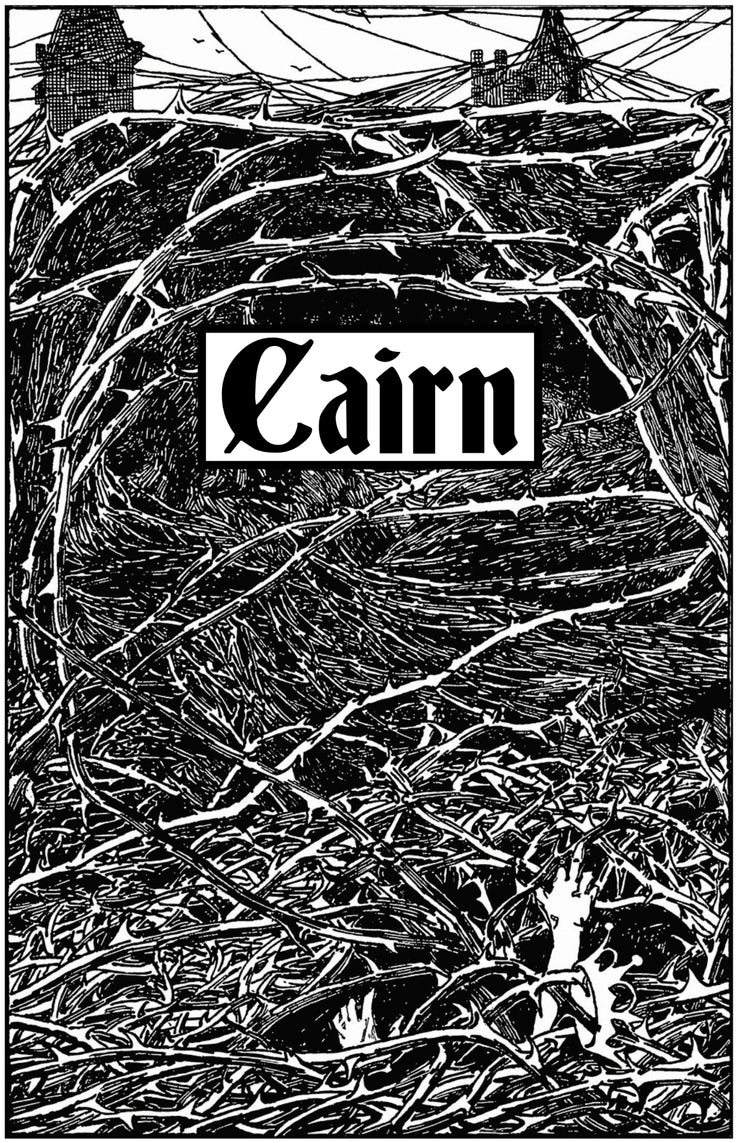Knave Fantasy; Dark Fantasy; Dark; Old-School Renaissance (OSR); Rules Lite; Exploration-Driven; Character Customization
'Knave' is a rules-lite, Old-School Renaissance (OSR) system that emphasizes exploration and character customization. It distinguishes itself through its classless system, slot-based inventory, and compatibility with existing OSR resources. While the core mechanics are simple, they provide a framework for engaging gameplay that appeals to both new and experienced tabletop gamers seeking a flexible and easily customizable experience.
Theme and Setting
While 'Knave' doesn't prescribe a specific setting, its mechanics strongly suggest a dark fantasy or OSR-style world. The emphasis on exploration, tomb-raiding, and resource management points to a setting where danger is ever-present, and player ingenuity is crucial for survival. The game's flexibility allows it to be easily adapted to various fantasy settings, from classic dungeon crawls to more grim and perilous landscapes. The inclusion of 100 level-less spells adds a layer of magical mystery and potential danger, suitable for a world where magic is not always predictable or safe. 'Knave 2e' expands on this with worldbuilding toolkits to generate dungeons, overworld regions, cities, monsters, items, spells, NPCs and factions.
Core Mechanics and Rules
The core of 'Knave' revolves around a streamlined set of rules designed for ease of use and quick play. Key mechanics include:
- Ability Scores: Characters possess six classic ability scores (Strength, Dexterity, Constitution, Intelligence, Wisdom, Charisma), each with a bonus and a defense value. These are determined by rolling 3d6, using the lowest roll as the bonus, and adding 10 to the lowest roll to determine the defense.
- Saving Throws: Saving throws are made by rolling a d20, adding the relevant ability bonus, and comparing the result to a target number (typically 15 or the opponent's defense score).
- Combat: Combat is straightforward, with players rolling a d20, adding their Strength (melee) or Wisdom (ranged) bonus, and comparing the result to the defender's armor defense. Damage is determined by the weapon used.
- Slot-Based Inventory: Characters have a limited number of item slots based on their Constitution defense, creating meaningful choices about what to carry. Armor occupies slots and provides defense. 'Knave 2e' features wounds that fill item slots forcing players to drop gear.
- Leveling: Characters gain levels at 1000 XP, increasing their maximum hit points and improving their ability scores.
- Magic System: 'Knave' utilizes a unique spellcasting system where spells are contained within spellbooks, each occupying an item slot and usable only once per day. This encourages strategic spell selection and resource management. 'Knave 2e' includes a spell generator for chaotic, randomized magic and a relationship-driven divine magic system.
The game utilizes a copper standard for currency. Reactions are rolled with 2d6, and creature morale is also determined with 2d6, influencing their likelihood to flee combat. The opposed rolls can create very swingy results. 'Knave 2e' implements a d6 Hazard Die system that condenses tracking encounters, clues, weather changes, fatigue, torch burn, and resource depletion into a single roll.
What Makes 'Knave' Unique
'Knave' distinguishes itself through several key features:
- Classless System: Unlike many traditional RPGs, 'Knave' lacks character classes. A character's abilities and role are primarily defined by the equipment they carry and the spells they possess. This allows for greater flexibility and customization.
- OSR Compatibility: 'Knave' is designed to be highly compatible with existing OSR resources, including adventures, bestiaries, and spellbooks. This makes it easy to integrate into existing campaigns or to use with a wide variety of pre-written materials.
- Slot-Based Inventory: The slot-based inventory system adds a layer of strategic depth to the game, forcing players to prioritize what they carry and manage their resources carefully.
- Level-less Spells: The game features a list of 100 level-less spells that provide a range of magical effects without being tied to character level. In Knave 2e, the spells empower PCs to alter the world in creative ways.
- Concise Ruleset: 'Knave' manages to pack a lot of gameplay into a small number of pages, making it easy to learn and reference during play. The first edition was contained to only 7 pages.
- Customization and Hacking: The game encourages customization and provides designer commentary to aid in hacking the rules to fit specific campaign needs. The Creative Commons license facilitates community contributions and modifications.
Target Audience and Player Experience
The target audience for 'Knave' includes:
- OSR Enthusiasts: Players who enjoy the simplicity, danger, and player-driven narratives of Old-School Renaissance games.
- New Tabletop Gamers: The rules-lite nature of 'Knave' makes it accessible to players who are new to tabletop roleplaying.
- Experienced Gamers Seeking Flexibility: 'Knave' provides a flexible framework that can be easily adapted to various settings and playstyles, appealing to experienced gamers looking for a customizable experience.
- GMs who like to improvise: The game encourages GM to improvise and make rulings on the fly.
The player experience is characterized by:
- Exploration and Discovery: The emphasis on exploration and resource management encourages players to explore the game world and discover its secrets.
- Character Customization: The classless system and focus on equipment allow players to create unique and personalized characters.
- Challenging Gameplay: 'Knave' can be challenging, with a high risk of character death, encouraging players to think strategically and work together.
- Fast-Paced Play: The streamlined rules and quick combat resolution make for fast-paced and engaging gameplay.
- Creative Problem Solving: The open-ended nature of the game encourages creative problem-solving and player ingenuity.
Some find that only the worst roll in character creation matters and that most character progression is gear based making Constitution the most important skill. Also the Wisdom skill choice for ranged attacks is not popular with some players. Some players of 'Knave 2e' find it 'half-finished' and that content was 'mashed together without much thought'.



